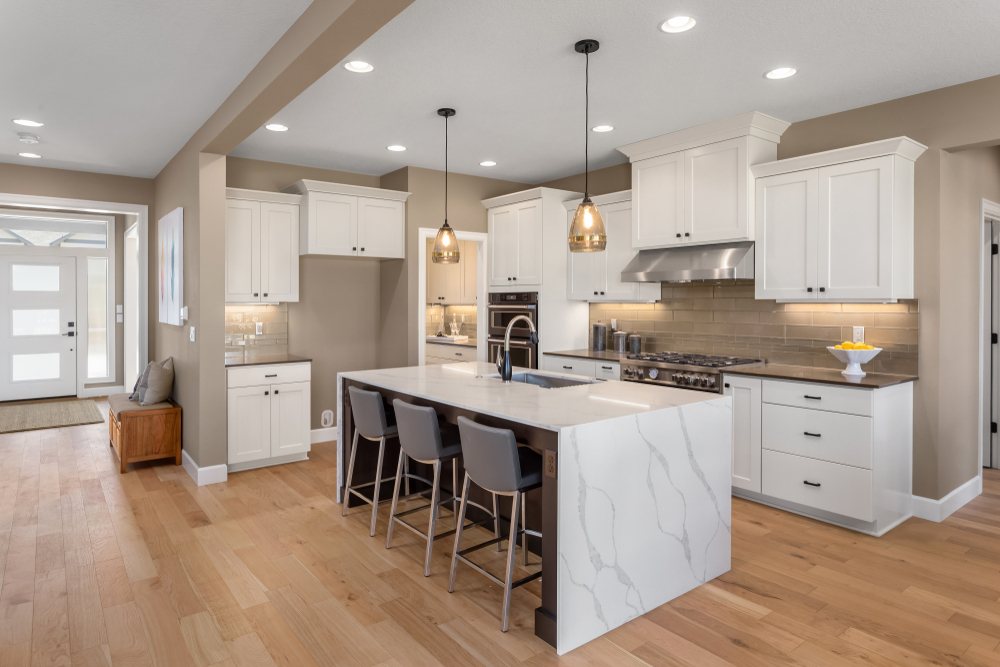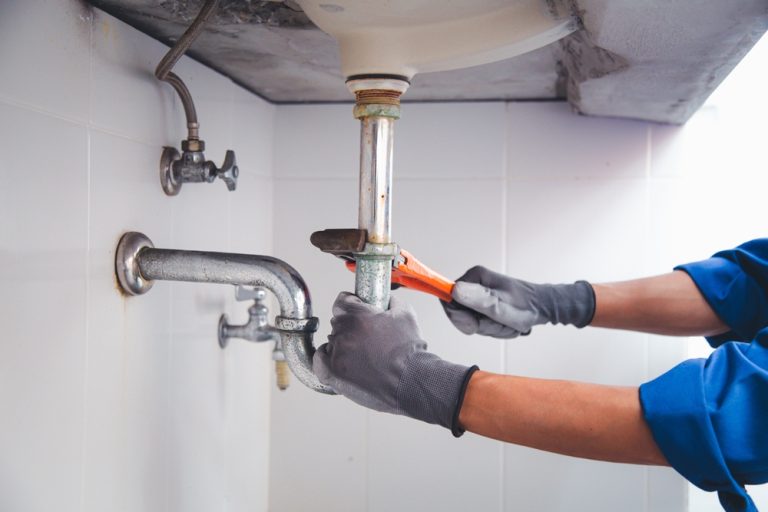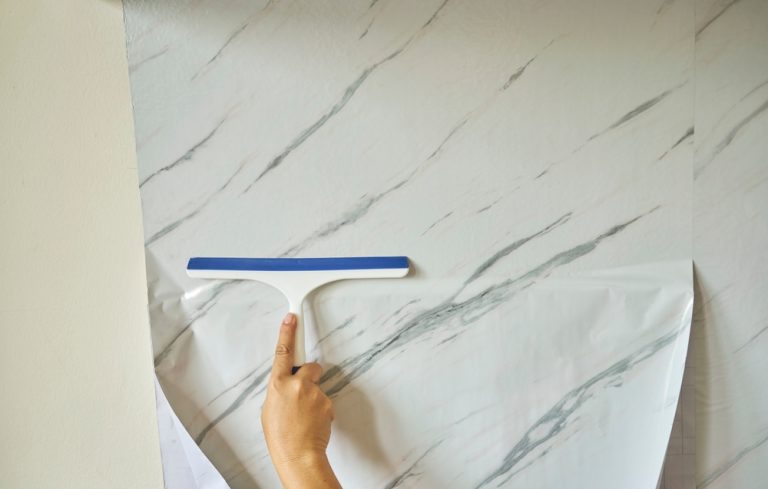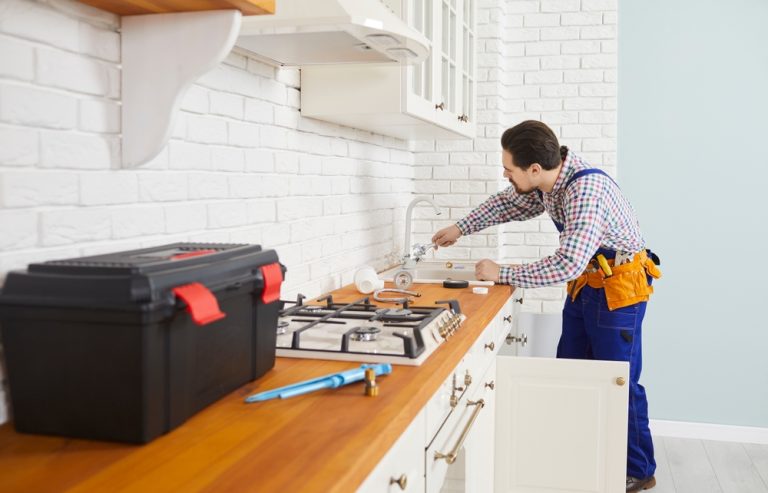How to Pay for a Kitchen Remodel?

A kitchen remodel is one of the most popular home improvement projects, and it can significantly enhance the functionality and value of your home. However, it’s also one of the most expensive renovations you can undertake, with costs ranging from a few thousand dollars for minor updates to tens of thousands for a complete overhaul. Understanding how to pay for a kitchen remodel is crucial to making your kitchen remodel both affordable and successful.
In this blog, we’ll explore various ways to pay for a kitchen remodel, from savings and home equity loans to credit cards and personal loans. We’ll also provide tips on choosing the best financing option for your situation.
Paying with Savings
One of the most straightforward and cost-effective ways to pay for a kitchen remodel is by using your savings. If you have enough funds set aside, paying in cash allows you to avoid interest charges and debt, giving you full ownership of your remodel from the start.
Advantages
- No Interest or Fees: By using savings, you avoid paying interest, fees, or other costs associated with borrowing money. This can save you a significant amount of money over the long term.
- Debt-Free: Paying in cash keeps you debt-free, which can provide peace of mind and financial flexibility for future needs.
- Full Control Over Budget: When you pay with savings, you have full control over your budget, making it easier to stay within your means and avoid overspending.
Considerations
- Impact on Savings: Using a large portion of your savings for a remodel can leave you without a financial cushion for emergencies or other expenses. It’s important to ensure that you maintain an adequate emergency fund after paying for the remodel.
- Opportunity Cost: Consider the opportunity cost of using your savings. The money you spend on the remodel could have been invested or used for other financial goals.
Home Equity Loans and HELOCs
If you don’t have enough savings to cover the cost of your kitchen remodel, a home equity loan or home equity line of credit (HELOC) can be a good option. Both of these financing options allow you to borrow against the equity in your home, often at lower interest rates than other types of loans.
Home Equity Loan
- Fixed Interest Rate: A home equity loan typically has a fixed interest rate, which means your monthly payments will remain consistent over the life of the loan.
- Lump Sum Payment: You receive the loan amount as a lump sum, making it ideal for larger projects where you need all the funds upfront.
- Repayment Term: Home equity loans usually have repayment terms ranging from 5 to 30 years, depending on the lender and the amount borrowed.
Home Equity Line of Credit (HELOC)
- Variable Interest Rate: A HELOC usually has a variable interest rate, which means your payments can fluctuate over time. This can be a disadvantage if interest rates rise.
- Flexible Borrowing: Unlike a home equity loan, a HELOC works more like a credit card, allowing you to borrow only what you need, up to a certain limit. You can draw funds as needed during the draw period, which typically lasts 10 years.
- Repayment Period: After the draw period ends, you enter the repayment period, during which you must pay back the borrowed amount, usually over 10 to 20 years.
Advantages
- Lower Interest Rates: Home equity loans and HELOCs generally offer lower interest rates than personal loans or credit cards, making them more affordable in the long term.
- Tax Deductible Interest: In some cases, the interest paid on a home equity loan or HELOC may be tax-deductible if the funds are used for home improvements. Consult with a tax professional to determine if you qualify.
Considerations
- Risk of Foreclosure: Since these loans are secured by your home, failure to repay them could result in foreclosure. It’s important to ensure you can comfortably afford the payments.
- Variable Interest Rates: With a HELOC, the variable interest rate can make your payments unpredictable, which can be a challenge if rates rise significantly.
Personal Loans
Personal loans are another option for financing a kitchen remodel, especially if you don’t have enough home equity or prefer not to use it. These loans are typically unsecured, meaning they don’t require collateral.
Advantages
- Fixed Interest Rate: Most personal loans come with a fixed interest rate, so your monthly payments remain consistent throughout the loan term.
- No Collateral Required: Since personal loans are unsecured, you don’t risk losing your home if you can’t make the payments.
- Quick Access to Funds: Personal loans often have a faster approval and funding process compared to home equity loans, making them a good option if you need the money quickly.
Considerations
- Higher Interest Rates: Personal loans typically have higher interest rates than home equity loans or HELOCs, especially if you have a lower credit score.
- Shorter Repayment Terms: Personal loans often have shorter repayment terms, typically ranging from 2 to 7 years. This can result in higher monthly payments.
- Impact on Credit Score: Since personal loans are unsecured, lenders may place more emphasis on your credit score, which can affect your ability to qualify for a loan or get a favorable interest rate.
Credit Cards
Using credit cards to finance a kitchen remodel can be a convenient option, particularly for smaller projects or specific expenses like purchasing appliances or materials. However, it’s important to be cautious with this approach due to the potential for high interest rates.
Advantages
- Convenience: Credit cards are easy to use and can be a convenient way to pay for smaller expenses as they arise during the remodel.
- Rewards and Promotions: Some credit cards offer rewards, cashback, or introductory 0% APR promotions that can make them an attractive option for short-term financing.
Considerations
- High Interest Rates: Credit cards typically have much higher interest rates than other financing options, especially after any introductory 0% APR period ends. Carrying a balance can lead to significant interest charges over time.
- Risk of Debt: Relying on credit cards for large expenses can quickly lead to unmanageable debt, especially if you’re unable to pay off the balance in full each month.
- Impact on Credit Score: High credit card balances can negatively impact your credit score, making it harder to qualify for other types of financing in the future.Impact on Credit Score: Since personal loans are unsecured, lenders may place more emphasis on your credit score, which can affect your ability to qualify for a loan or get a favorable interest rate.
Government Programs and Grants
In some cases, government programs and grants may be available to help finance a kitchen remodel, particularly if the remodel involves making your home more energy-efficient or accessible.
- FHA Title I Loans: The Federal Housing Administration (FHA) offers Title I loans for home improvements, including kitchen remodels. These loans are available to homeowners who have little or no equity in their homes and can be used for a wide range of projects.
- Energy-Efficient Grants and Rebates: Some state and local governments offer grants or rebates for home improvements that increase energy efficiency, such as upgrading to energy-efficient appliances or installing new windows.
Advantages
- Low or No Interest: Government programs often offer low or no interest rates, making them an affordable option for financing a remodel.
- No Repayment Required: Some grants and rebates do not need to be repaid, making them an attractive option if you qualify.
Considerations
- Eligibility Requirements: Government programs and grants often have strict eligibility requirements, such as income limits or specific project criteria.
- Limited Availability: These programs may not be available in all areas, and funding can be limited, so it’s important to research your options early in the planning process. can affect your ability to qualify for a loan or get a favorable interest rate.
Conclusion
Financing a kitchen remodel can be a complex process, but with the right approach, you can find a solution that fits your budget and goals. Whether you choose to pay with savings, take out a home equity loan, use a personal loan, or explore other options, it’s important to carefully consider the pros and cons of each method.
By understanding your financial situation, researching your options, and planning ahead, you can ensure that your kitchen remodel is both affordable and successful. With the right financing in place, you’ll be well on your way to creating the kitchen of your dreams.






